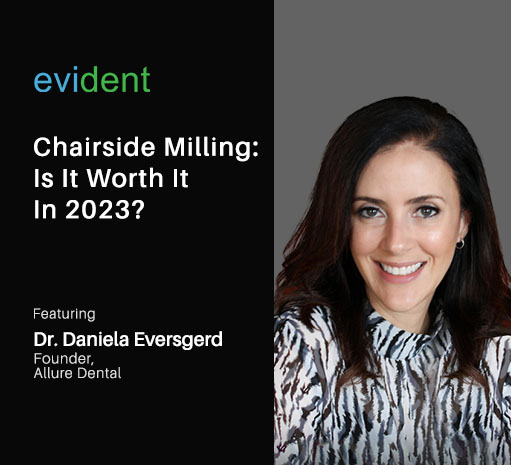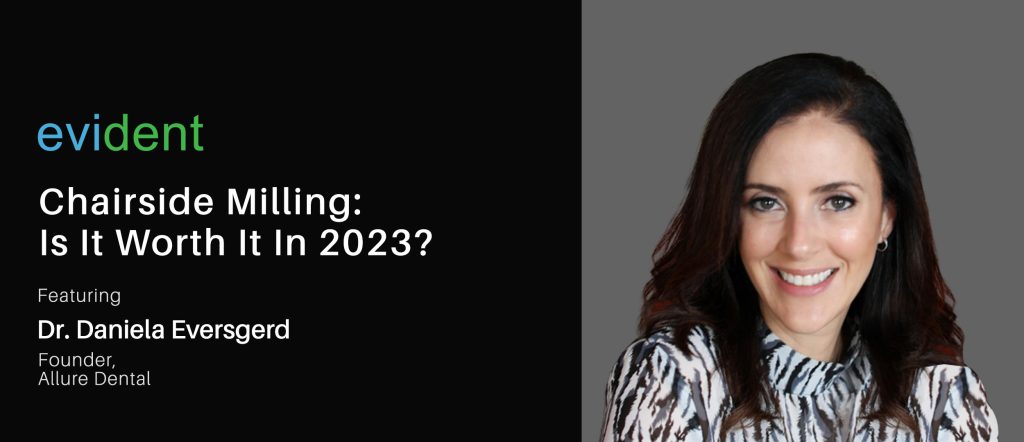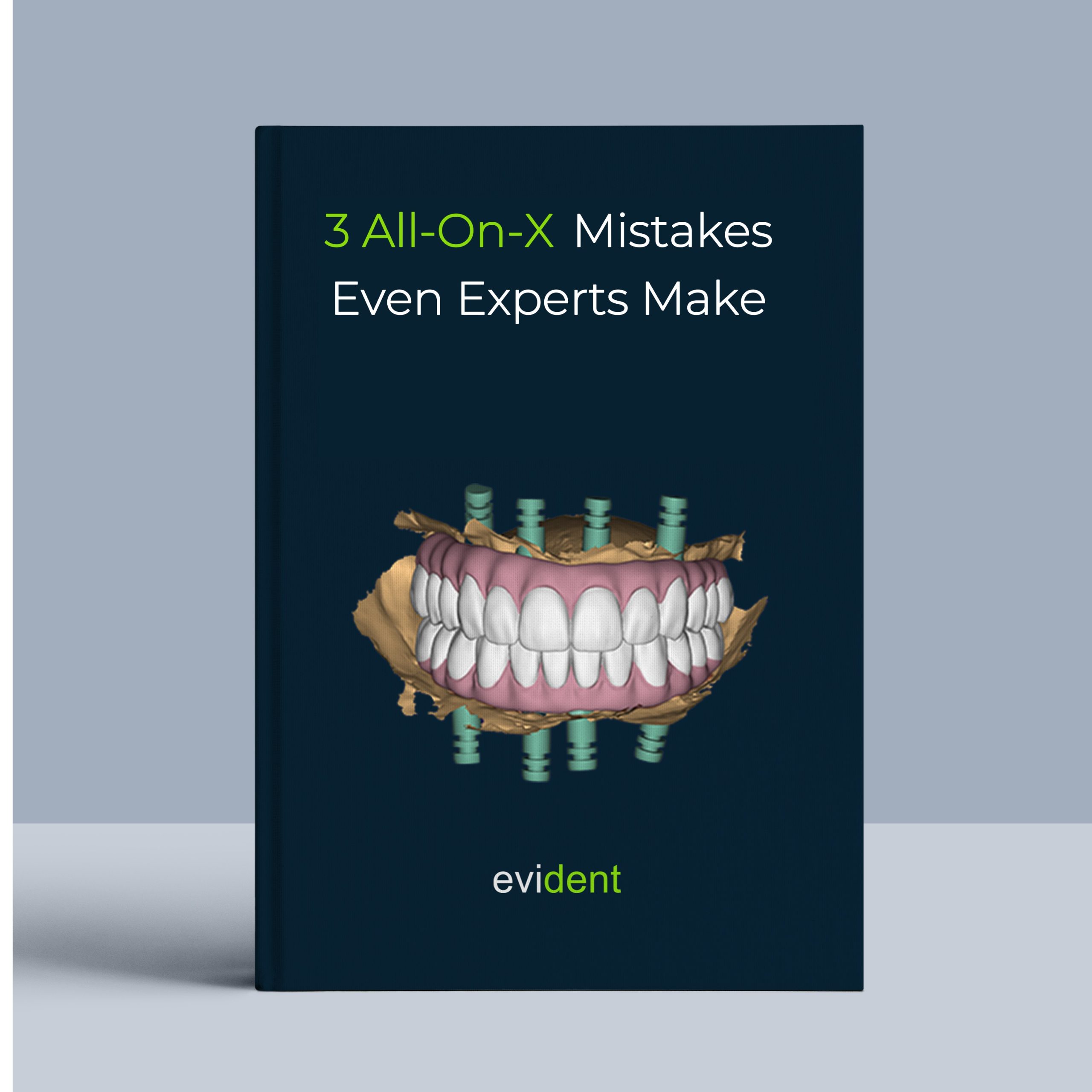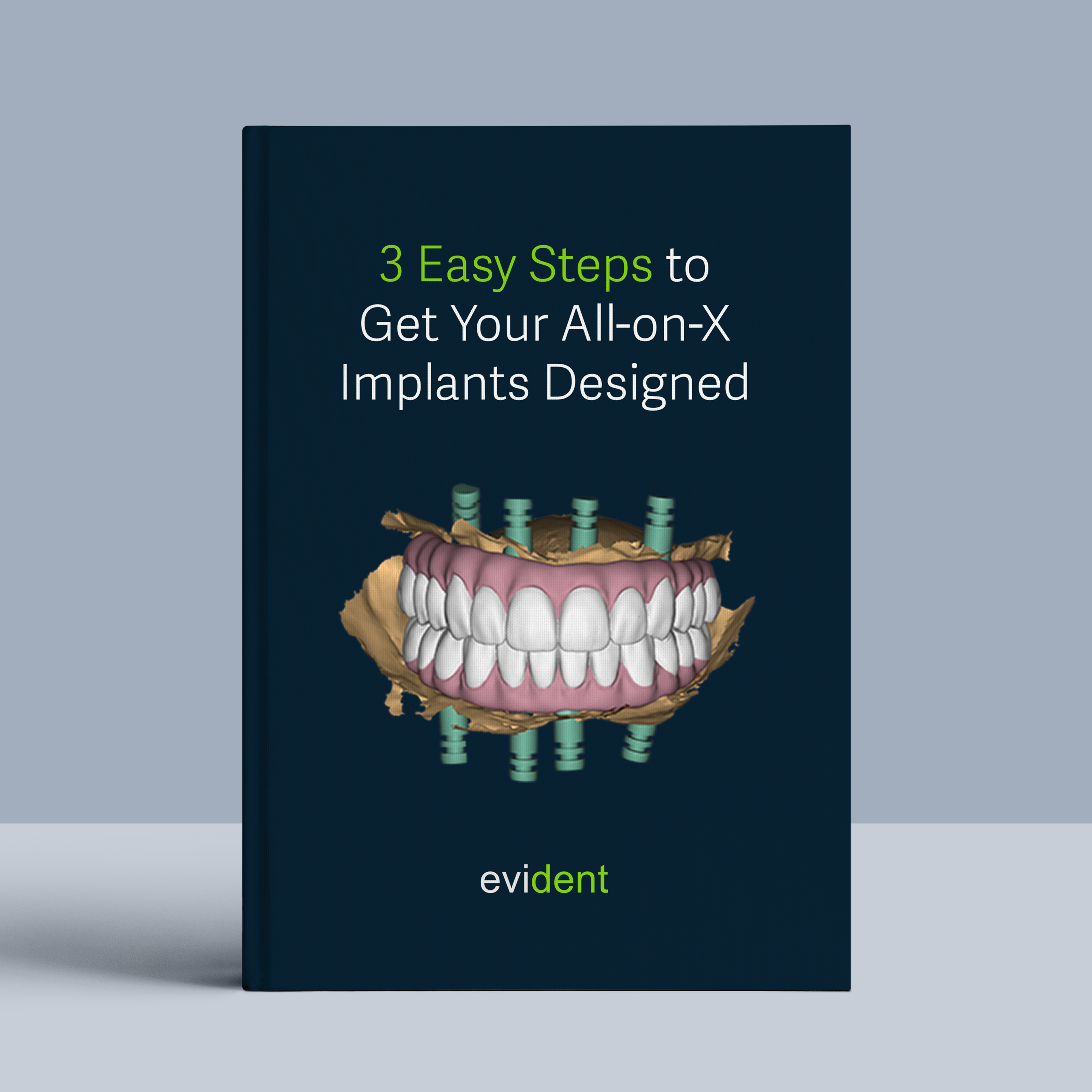

Digital dentistry continues to revolutionize the landscape of this centuries-old field of medicine. Innovations are continuously being introduced to improve the industry. This includes everything from the way the dentistry ecosystem operates to the way individual practices serve patients in the day to day.
One of these advancements is chairside milling. Chairside milling is a process that enables clinics to produce dental restorations onsite, providing convenience and immediate results for patients. This integration is still on the rise, however. Many practices opt to outsource their implant production to milling centers and 3D printing facilities. However, as with all innovations, chairside milling offers unique advantages over competitors while coming with its own unique considerations.
In this episode of Evident’s Digital Dentist series, we were joined by Dr. Daniela Eversgerd, founder and owner of Allure Dental, to discuss her journey into digital dentistry and the benefits that chairside milling was able to afford her practice. Through this webinar, she shared her unique insights into how digital workflows can greatly empower a practice and important points to assess when considering these integrations.
Journey into Digital Dentistry
Dr. Daniela’s background is one that spans 21 years of experience, practicing in multiple states and overseas. Originally from Brazil, her dentistry roots began in the Southern Illinois University School of Dental Medicine. Since then, she has practiced in Chicago, Connecticut, and Brazil before settling down in Louisiana.
Dr. Daniela’s interest in digital dentistry was sparked during her time as an associate dentist in Connecticut in 2006. She was introduced to CEREC chairside milling and quickly realized its potential. She immediately understood its practical applications could impact a practice’s productivity.
Recognizing this, Dr. Daniela invested in a CEREC system that she had shipped upon moving to Brazil. This made her practice the first in the area to own one. Though this choice sometimes posed challenges as the unit required specialized technical support. But ultimately, the experience taught her how to troubleshoot and become solution oriented. Ultimately, she was captivated by the possibilities of digital dentistry, seeing how this investment paid off for her.
Upon returning to the United States, she continued practicing with chairside milling. Eventually she opened her own practice, Allure Dental, in 2017. As Dr. Daniela puts it, “I built my office to change the patient’s minds about dentistry. Most patients are either really fearful or they just hate going to the dentist – we are literally in their heads, in their personal space, maybe causing a little discomfort. Part of redefining that dental experience is having the best cutting edge technology.”
Dr. Daniela’s integration of digital dentistry, including chairside milling, played a significant role in achieving this goal.
Chairside Milling and Digital Workflows
The process of chairside milling on its own is part of a bigger picture in digital dentistry. This process begins with a digital scanner that collects data to create an impression of the case. From there, the restoration is designed either in house or by an outsourced lab through software like exocad and 3shape.
Dr. Daniela mentioned that she sends her scans to Evident’s design services. The final restoration design is what the milling unit processes to fabricate the final implant. When asked how to determine which cases should be outsourced, she mentioned that they only send over the more complex cases. Those that her practice specializes in are produced in-house with no issue.
Benefits of Chairside Milling
Dr. Daniela is an ardent proponent of chairside milling and one with years of experience on the matter. She’s quite vocal about the benefits that chairside milling can provide. She discussed some central advantages, namely the following:
- Control and Streamlined Production
The process allows dentists to produce restorations onsite. Meaning, dentists can have a much more simplified workflow when creating crowns and other dental prosthetics. This also allows for more control over the process from digital scanning to milling and final restoration placement.
- Better Patient Experience
Streamlining these processes allows dentists to offer a better experience for their patients. Having a full digital workflow eliminates the unpleasant aspects of previous analog methods. Dr. Daniela quipped about how some patients can enjoy such a completely hassle-free experience; so much so that they see it as a sort of “spa day.” This caliber of ease greatly reduces the anxiety that patients feel on a trip to the dentist, which is a common pain point across the board.
- Same-day Solutions
Chairside milling allows clinics to offer immediate results for their patients. This allows for ample time to prep the patient’s teeth while their restorations are being produced. Dr. Daniela attests that it is possible to mill individual crowns in 4 minutes. Often, the full treatment process can take as little as 90 minutes. This minimizes the need for repeat appointments. That means greater convenience for patients and allows for a higher volume of treatments per day for practices.
- Word of Mouth Marketing
Tying into the better patient experience is the increase chairside milling can bring in referrals. When patients have a positive experience with the practice, they are more likely to refer it to their own circles. This gives dentists passive marketing purely from superior service.
- Precision and Accuracy
Digital scanning and milling allows dentists to produce more accurate dental restorations. It greatly reduces the margin of error that traditional methods are prone to. This level of precision allows for better-fitting restorations and improved patient outcomes.
Challenges
On the other hand, chairside milling also comes with some challenges. While this process offers tremendous benefits, as Dr. Daniela notes, it entails significant commitment and a learning curve.
Introducing chairside milling to a workflow means that practices would have to invest in equipment to effectively integrate the process. It also requires a commitment to education as you would need to train staff to operate the equipment. Investing man hours into this training process is also necessary. She emphasized the need for dentists to understand the technology thoroughly and to stay updated with the latest advancements.
Is Chairside Milling Worth It?
Ultimately, the question of whether chairside milling is worth it in 2023 depends on the needs of your practice. It is a process that requires time, effort, and resources. But it is also one that sets you apart from other practices in the area.
Currently, there are only 12-15% of practices in the US that offer chairside milling as an option. Those that do have a distinct advantage over competitors and provide an enhanced experience to their patients.
Determining whether to integrate it into your workflow will require careful assessment of your practice and your vision, and a continuous push for your own unique growth. In the words of Dr. Daniela, “Dentistry is a tough profession. We’re working with fractions of millimeters. Find what you’re passionate about and never stop learning.”
Evident Digital recognizes that each practice is unique, and that there is more than one way to go about digital dentistry successfully. With our wide range of services from digital design to lab management software, Evident is committed to empowering dentists to secure their place in the future of dentistry. Improve your practice’s efficiency and productivity and learn more about Evident Digital today.








